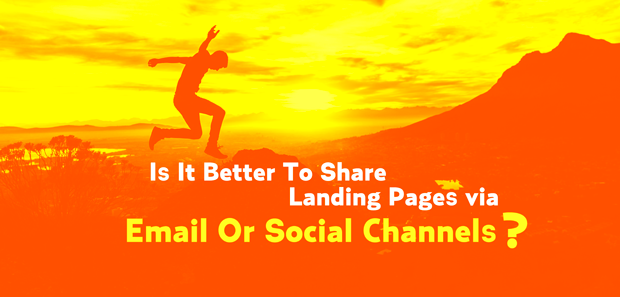The primary purpose of a landing page is which is to gather information about prospects by requesting that they fill out a form. You can use these details to determine what content to deliver to a potential customer and figure out how best to re-target someone in the future. So once you’ve created the perfect landing page, the next step is deciding where you publish the link to drive the most traffic. Some types of content are best shared via email, while social media is more appropriate for other material. In the case of landing pages, you don’t need to decide between the two: Both can be effective channels if you use them properly.
Incorporate strategies to serve both email and social channels. As separate channels driving traffic to landing pages, email and social media are both effective. Marketing efforts lead to a page that requests visitors to complete a form or some other action when they arrive. The landing page is intended to welcome leads into the sales funnel, where they can be guided by additional marketing efforts.
But keeping disparate email and social channels for landing page marketing doesn’t cut it anymore. Your strategies should embrace both to deliver content that your target audience wants to receive and encourage them to share it.
Update your existing approach to capture more leads and conversions. Don’t abandon the landing pages you use now – just upgrade them. A streamlined approach to email and social channels requires you to become more customer-centric and think of alternatives to the traditional landing page: You don’t always need to send visitors to your website when conversion can take place elsewhere. The triggers that encourage visitors to interact with your landing page are multi-channel, so you need to follow.
Learn from some examples. To demonstrate the future of landing pages and see how they don’t need to rely on direct conversion, here are a couple of examples.
- Emails: Sharing your landing page via email requires you to carefully target the message and the audience. After all, you’ve already got their contact information. Use your CRM solution to find commonalities among different contacts and formulate your email campaign around their similarities. Then share an alternative landing page that enables you to bring them further into the sales funnel.
- Social Media: One of the best marketing tools for landing pages puts your followers to work for you, sharing content with people who may not otherwise hear your message. When you post the link to a landing page on your profile, you expand your reach exponentially.
A landing page is a key component online marketing because it’s how you build your database, generate leads and move prospects into the top levels of your sales funnel – and beyond. As such, it’s important to know how best to share your landing page to capture the tremendous benefits. Social media and email hold considerable potential, so incorporate both of these channels in your landing page marketing strategy.
